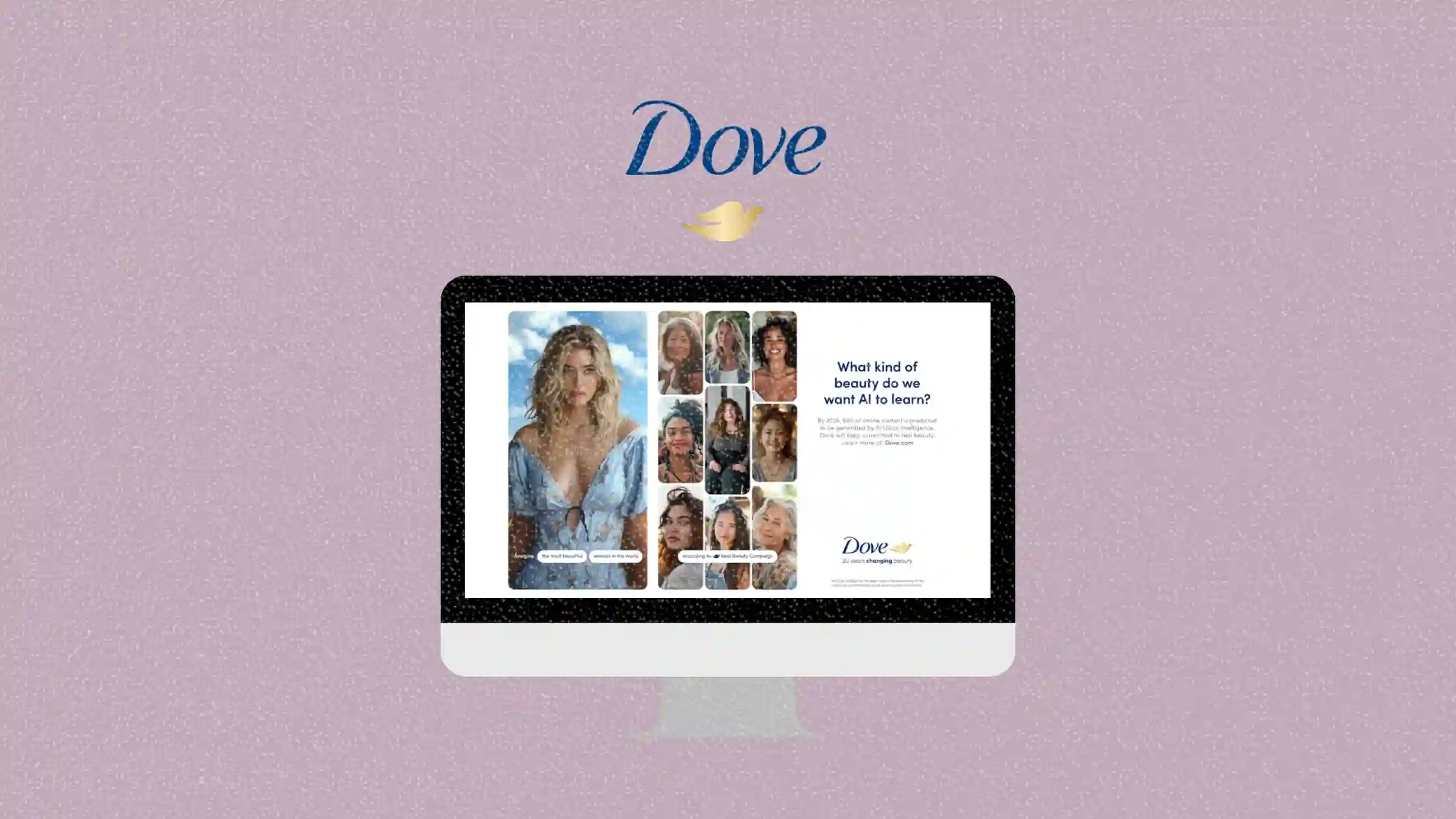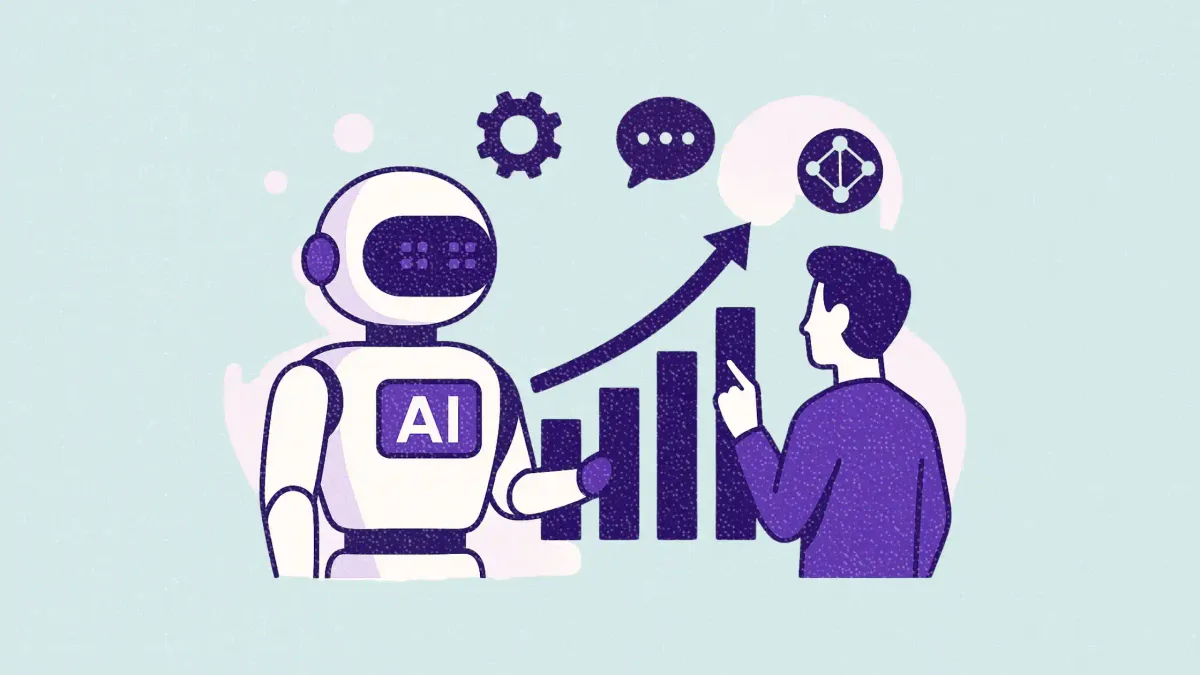Dove’s AI-era real beauty campaign wins big at Cannes Lions
From beauty standards to public transport, this year’s Cannes Lions campaigns tackled AI, incentives, and misinformation

In a year when AI loomed large over every industry conversation, Dove’s “Real Beauty” campaign reasserted the brand’s relevance by taking a principled stand—and snagging the Media Grand Prix at Cannes Lions 2025 in the process.
Meanwhile, Indian Railways tapped into national lottery fever to solve a billion-dollar problem, winning the PR Grand Prix. Vaseline continued its multi-pronged effort to reclaim health authority with creators and earned the Social & Creator Grand Prix.
This article explores what each of these award-winning campaigns did right—and what B2B marketers can take away from their bold moves.
Short on time?
Here’s a table of contents for quick access:
- Dove tackles AI-generated beauty with Pinterest-powered campaign
- Indian Railways’ lottery-ticket hack transforms PR into infrastructure impact
- Vaseline goes creator-first to fight health misinformation
- What marketers should know

Dove tackles AI-generated beauty with Pinterest-powered campaign
Dove’s “Real Beauty Redefined for the AI Era” campaign, executed with Mindshare and Pinterest, made a strategic media play that directly targeted the rising flood of AI-generated beauty images. The initiative encouraged users to shape Pinterest’s algorithm by creating and engaging with content that reflected authentic, natural beauty standards.
By seeding these user-generated visions into Pinterest’s ecosystem, the platform’s visual discovery engine began serving up more inclusive and realistic images—flipping the script on algorithmic bias. The campaign’s out-of-home rollout in global cities like London and New York gave it physical legs, while Dove’s AI pledge (“never use AI to create or distort women’s images”) added brand integrity to the mix.
With 4 billion earned impressions and 500 million views, Dove didn’t just win impressions—it sparked a conversation about ethical media in the AI age.
Indian Railways' lottery-ticket hack transforms PR into infrastructure impact
India’s national rail system was losing US$820 million annually due to ticket dodging. Enter “Lucky Yatra,” a behavioral economics twist from FCB India that turned train tickets into lottery entries.
As the world’s most lottery-obsessed country, India proved the perfect testing ground. By leveraging the thrill of winning, the campaign drove US$685 million in legitimate ticket sales—funds reinvested into public transit infrastructure.
This wasn’t just PR spin; it was systems-level marketing.
The campaign demonstrated how old-school sectors can use creativity to incentivize compliance and fuel systemic improvements—lessons any public service marketer should note.
Vaseline goes creator-first to fight health misinformation
“Vaseline Verified,” led by Ogilvy Singapore, leaned on social creators not to boost brand affinity, but to reclaim credibility in a space crowded with misinformation.
Targeting health hacks and sketchy TikTok trends, the campaign featured creators debunking common petroleum jelly myths—backed by product science.
The kicker? These videos became Vaseline ads, merging user trust with brand voice. With a 43% bump in sales and 7.1 million views, the campaign proved that creator partnerships don’t have to be gimmicky to work. They just need clarity, credibility, and the right distribution strategy.
What marketers should know
- Use AI constraints to your advantage
Dove didn’t just use AI—they challenged it. For marketers worried about AI eroding trust, this campaign is proof that resisting the trend (with substance) can be just as powerful as embracing it.
- Gamify where compliance is a hurdle
Indian Railways showed how incentives can nudge behavior at scale. Marketers in regulated or low-compliance sectors (think: finance, healthcare) can borrow this playbook to make boring processes feel rewarding.
- Let creators lead, but with guardrails
Vaseline’s myth-busting approach shows that creators don’t just entertain—they educate. Give them clear goals, then let them engage audiences in ways traditional ads can’t.




